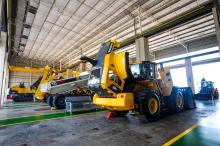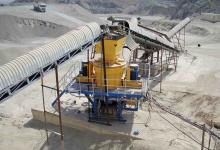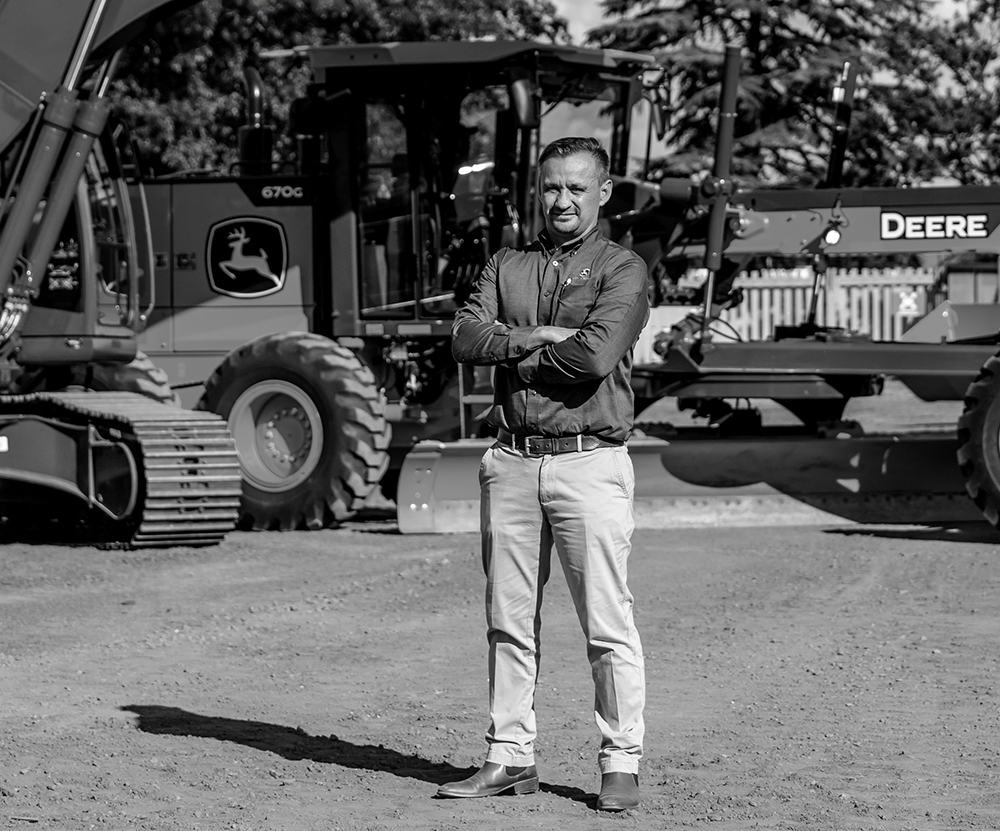
In March 2021, John Deere announced its decision to take full control of the marketing and support of its John Deere-branded construction products in Africa. The expansion of the construction line-up targeted 18 countries across Southern Africa and West Africa, where the Deere-branded construction offering was previously not available.
The countries in question included South Africa, Botswana, Zimbabwe, Eswatini (formerly Swaziland), Namibia, Zambia, Kenya, Uganda, Mozambique, Angola, Malawi, Tanzania, Ethiopia, Egypt, Rwanda, Burundi, South Sudan and Sudan.
With a wealth of organisational experience, Jaco Beyers was appointed as the MD of John Deere Africa Middle East (AME) in October 2021, with a critical mandate to drive the organisational change to fruition.
Beyers joined the Deere set-up in 2004 as a trainee territory manager in South Africa, before he was appointed divisional sales manager in Central Africa, where he successfully developed new business models for the region and set up a strong sales presence in East and West Africa.
Beyers went on to hold a number of international roles, including strategic planning manager for Region 1, based in Singapore, and global large tractor project manager in the US.
Beyers has also been instrumental in implementing agile methods in several areas of the John Deere business. His extensive experience in the global markets and his commitment to John Deere customers, dealers and staff prepared him for the new role.
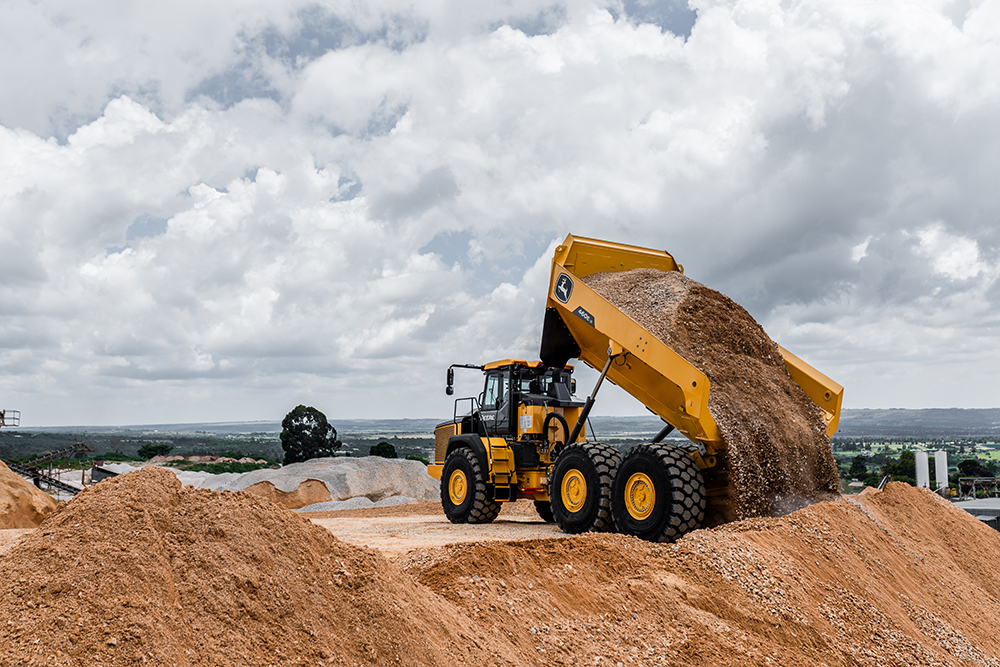
According to Beyers, as John Deere has successfully conducted business in Africa for more than 140 years, the expansion of the construction range is testament to the company’s commitment to the continent.“Africa is projected to be home to 2.5 billion people by 2050. At John Deere we recognise the need for the continent to be able to build a conducive infrastructure to support its population growth, leveraging the abundance of mineral resources,” he says, adding that the company is excited about the growing trends of mechanisation and technology in Africa and the Middle East.
The first phase of the rollout commenced with a selected range of John Deere-branded construction equipment, including backhoe loaders, excavators, wheeled loaders, motor graders and crawler dozers. More importantly, adds Beyers, it also entailed the appointment of capable and reputable dealer partners with a wide support footprint across the region. This, he says, has successfully been accomplished, paving the way for the second phase of the rollout.
“Five years ago, we embarked on a complete channel redesign, which we implemented 18 months ago, with remarkable success to date. We selected what we believe are the strongest dealers, based on their wide support footprint, closeness to their customers, investments in their infrastructure, personnel, tools and training, which are all key to supporting our construction equipment range, not only now, but well beyond the next 50 years.”
The appointment of channel partners to support the brand, adds Beyers, was a crucial step in the venture. As part of the exercise, AFGRI Equipment was appointed the distributor of selected areas in South Africa, namely Gauteng, Limpopo, part of Mpumalanga, part of the Free State and the Western Cape, as well as Botswana and Zimbabwe.
Senwes Equipment is the authorised distributor for selected areas in South Africa (North West, part of Free State and the Eastern Cape) as well as Namibia. The Mascor Group is responsible for KwaZulu Natal and part of Mpumalanga in South Africa, as well as Uganda and Kenya in East Africa. The TATA Group is the sole custodian of the brand in Tanzania, Zambia, Malawi, Nigeria and Ghana.
A key competitive edge these dealers have is their expanded support network in their respective jurisdictions. They all have branches close to major towns, allowing them to offer quick service to customers operating within every corner of the region. The dealers have undergone extensive training to ensure that their teams are ready to support the new products in the market.
“Despite the COVID-19-influenced lockdowns, I take my hat off to all our channel partners for their commitment to this venture. To provide context, their say-do ratio is about 150%, which means that they accomplished everything they committed to do during the first phase of the rollout and even went beyond their plans,” says Beyers.
Having put this support base in place, Beyers says now is the time to introduce the production-class equipment. At the heart of this range is the 42-tonne class John Deere 460E-II articulated dump truck, which made its debut on 26 July, at a launch event held at AfriSam’s Jukskei quarry in South Africa.
John Deere has also added the 744L wheeled loader to its existing stable of five models. Designed with the mining and quarrying customer in mind, this model features a 236-kW engine, a 3.8 – 5.25m³ bucket capacity range and an operating weight of 25.3 tonnes.
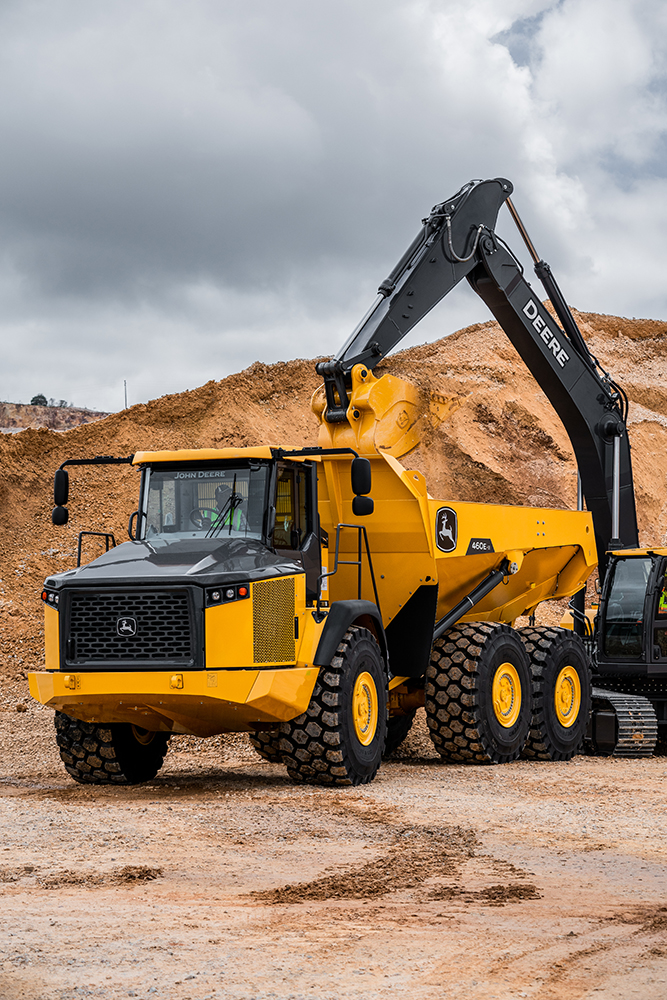
The company has also introduced the larger 950K and 1050K dozer models. These machines are designed to be big enough to handle mass-excavation and road-building tasks, yet are equally adept at fine grading and site development.
“These ranges are classified as large-production-size equipment, ideally suited for medium-size mines and quarries,” says Beyers. “We see a big trend towards mid-tier mining, which we believe is a big opportunity for this range.”
A further competitive edge for John Deere, says Beyers, is the lifecycle value proposition of the equipment, which is made possible by the company’s focus on technology. “Technology is what has driven John Deere forward over the years,” he says.
For example, the 460E-II normal drive mode reduces fuel consumption by up to 7% compared with existing competitor models, while eco mode, which conserves fuel by managing engine power delivery and enhancing transmission response for applicable conditions, further improves fuel consumption by up to 12%.
“Our John Deere equipment is designed for fuel efficiency, productivity and operator comfort. With these attributes, we believe we are going to shift the yellow metal equipment market in the region,” says Beyers.
In addition, subscription to John Deere’s JDLink telematics system is available free of charge to users. JDLink allows owners and managers to connect to their machinery remotely, to help monitor and track operations and productivity.
Beyers also adds that the production class comes at a time when channel partners have made substantial investments to be able to support the range in the market. As part of the John Deere aftermarket strategy, dealers do advance stocking ahead of new machine launches in the market. This ensures that they have parts available before machines are introduced in a certain market.
John Deere is dedicated to keeping its dealers equipped with the necessary parts. This is made possible by the company’s worldwide distribution network. The key distribution centres for Africa and Middle East comprise the Regional Distribution Centre (RDC) in South Africa, the Parts Distribution Centre in Europe and the parts facility in the US. Combined, these facilities stock 900,000-part numbers, with more than 120,000-part shipments despatched on a daily basis.
Located in Kempton Park, South Africa, the 20,000-m² RDC serves the southern part of Africa. It stocks 86 000 stock numbers worth R1.5 billion, averaging 600 shipments a day. With the integration of the construction business last year, John Deere AME added 17,000 more part numbers to the RDC.
“We have made the investment and our dealers have also invested to support our customers in the region. We will continue to add part numbers as more construction models become available for our market,” he says.

